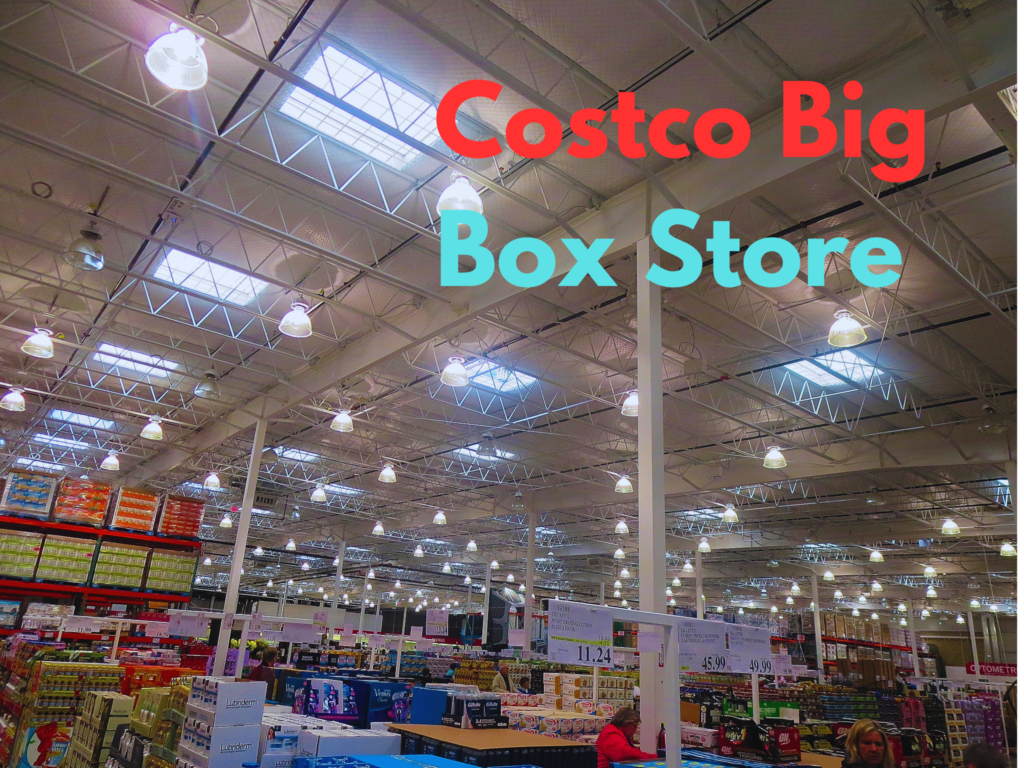
The Success Behind Costco Big Box Store: Understanding Its Business Model
In the United States, Costco’s (COST) warehouse club model has become incredibly successful. The corporation serves 124.7 million members and runs 857 locations, mostly in North America, as of 2023. Most of these members who pay dues frequently purchase Costco’s jumbo-sized goods. What is the key to Costco’s extraordinary success? Let’s examine the three primary features that set Costco apart as a retailer. (Costco Big Box Store)
Key Takeaways
- Membership-Driven Profits: Since only members are permitted to shop at Costco’s locations, the majority of its revenue comes from membership fees..
- Bulk Pricing for Loyalty: Costco’s membership model promotes consumer loyalty by allowing them to sell goods in bulk at cheaper pricing.
- Zero Advertising Budget: Costco drastically lowers its running costs by depending on repeat business rather than traditional advertising.
- Well-Paid Employees: Because Costco pays more than many other stores, its employees are more driven and effective..
- Expensive Stock: Because of its high price-to-earnings ratio, Costco’s stock is valued at a premium even though its operations are efficient.
Profit Before Selling a Thing
The stability of Costco’s business model is made clear by its financial performance. Net sales in fiscal 2022 were $222.7 billion, a 16% increase over fiscal 2021. With membership fees excluded, the company’s gross margin was 12.05%, which was far less than Walmart’s 24.4% for the same year. Nonetheless, a significant amount of Costco’s $27.6 billion total profit in 2022 came from membership fees, a major source of income, which brought in $4.2 billion.
Costco’s ability attract members to pay the $60 annual dues for a Gold Star membership or the $120 annual dues for an Executive membership is what drives its earnings, in contrast to many traditional shops that depend largely on same-store sales. This concept of recurring revenue promises consistent profitability. (Costco Big Box Store)
A High Retention Rate
Customers can easily defend their membership costs because to Costco’s pricing strategy. With an average family income of $93,000 and prices much cheaper than rivals, Costco members renew their memberships at a rate higher than 91.3%. This high rate of loyalty provides constant customers, resulting in steady income over time.
No Advertising? No Problem
The majority of retailers spend a lot of money on advertising. Walmart, for example, invested $3.9 billion in advertising in 2022. In contrast, Costco spends almost nothing. Rather, it depends on:
- Product Value: Members keep coming back because of the great value and bulk pricing.
2. Word of Mouth: Organic growth in customers is fuelled by devoted members and satisfying experiences.
Because Costco’s earnings are derived from memberships, the strategy is effective. Spending a lot of money to attract new members would hurt the bottom line.
High Wages, High Productivity
Another key component of Costco’s success is its employee-centric strategy. The average hourly base wage for its U.S. employees was $18.24 as of mid-2023, while Walmart’s was $13.50. Higher productivity results from this investment in workers; on average, Costco employees make almost three times as much money as their colleagues at Walmart and Target. (Costco Big Box Store)
In addition, compared to conventional big-box retailers, Costco requires fewer employees due to its basic warehouse architecture. This simplified approach improves the purchasing experience and promotes repeat business and client loyalty.
Great Company, Expensive Stock
Costco has unmatched customer loyalty and operational efficiency, but its stock is still pricey. With a price-to-earnings ratio of 37.89 as of May 2023, Costco outperformed the historical S&P 500 average of 21.92. In contrast, the average P/E ratio for grocery stores was 6.56 and for department and discount stores it was 11.46
Even though Costco is a fantastic company, investors may find that its stock is overpriced; if prices ever drop to more affordable levels, it would be a great time to buy. (Costco Big Box Store)
Fore more article on our Website
Competitive Advantages
Kirkland Signature, Costco’s private-label brand, gives it an advantage over rivals. Kirkland products give clients great value because they usually sell for around 20% cheaper than national brands. Customers and investors are drawn to Costco’s steady business model because of its membership-driven operations and bulk prices.
The Bottom Line
Costco’s position as a retail powerhouse has been solidified by its business strategy, which is focused on bulk price, membership fees, and staff satisfaction. By avoiding traditional promotion and preserving excellent customer retention rates, Costco offers its consumers unmatched value. It is a better option during market downturns, but some investors may be put off by its stock price. All things considered, Costco’s success story sets the standard for operational excellence in the retail industry.
FAQs
What Is Costco’s Competitive Advantage?
Costco’s private label, membership fees, and reduced prices provide it a competitive edge while offering customers dependable, reasonably priced goods.
Does Costco Offer Free or Discounted Memberships?
No, memberships at Costco are not free or cheap. Through purchase savings, its pricing strategy guarantees that members recover their expenses.
Who Owns Kirkland?
Costco’s private-label brand, Kirkland Signature, provides premium goods at more affordable costs than its national rival.
